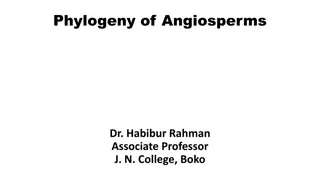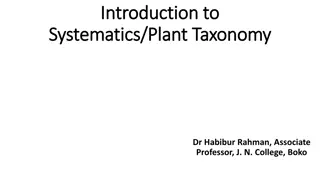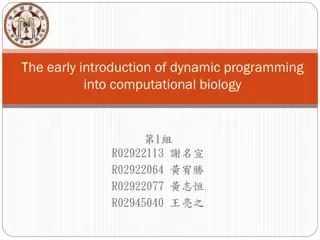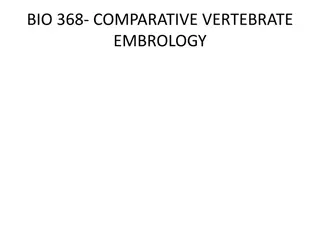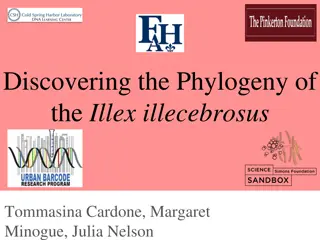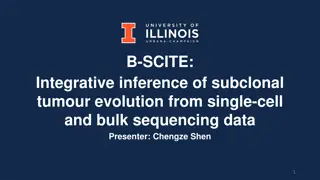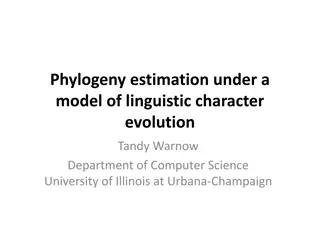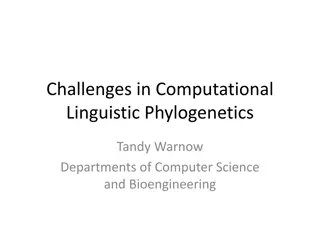Exploring Seed Plant Diversity and Adaptations
Delve into the realm of seed plants, uncovering their unique adaptations for reproduction, their phylogeny with gymnosperms and angiosperms, and the diversity within gymnosperms such as conifers, cycads, gingkophytes, and gnetophytes. Discover the evolutionary success of seed plants through their wa
5 views • 23 slides
Understanding Multiple Sequence Alignment with Hidden Markov Models
Multiple Sequence Alignment (MSA) is essential for various biological analyses like phylogeny estimation and selection quantification. Profile Hidden Markov Models (HMMs) play a crucial role in achieving accurate alignments. This process involves aligning unaligned sequences to create alignments wit
0 views • 29 slides
Understanding Phylogeny and Evolution in Angiosperms
Phylogeny is the study of evolutionary relationships among organisms, depicted in phylogenetic trees based on shared characteristics. This overview delves into terms like homology, analogy, monophyly, and co-evolution in angiosperms with an emphasis on taxonomy, systematics, and the evolutionary his
1 views • 25 slides
Insights into Plant Taxonomy and Systematics by Dr. Habibur Rahman
This informative content delves into the aims and principles of plant taxonomy and systematics as elucidated by Dr. Habibur Rahman. It covers the significance of taxonomy in identification, classification based on natural affinities, inventory creation, evolution detection, and its integral role in
2 views • 34 slides
Challenges and Techniques in Multiple Sequence Alignment
Multiple Sequence Alignment (MSA) poses a significant challenge due to NP-hard problems, large datasets, and the lack of accuracy in current methods. Novel techniques are needed to address scalability and accuracy issues in MSA, which serves multiple purposes like phylogeny estimation and structure
1 views • 52 slides
Understanding Taxonomy and Classification in Biology
Scientists use classification to group organisms logically, making it easier to study life's diversity. Taxonomy assigns universally accepted names to organisms using binomial nomenclature. Carolus Linnaeus developed this system, organizing organisms into species, genus, family, order, class, phylum
0 views • 11 slides
Understanding Chromosomes: Key Components, Functions, and Significance
Chromosomes, essential in mitosis and meiosis, are condensed forms of DNA vital for heredity, mutation, and evolution. Learn about their structure, role in inheritance, and impact on species development through historical discoveries. Discover the importance of chromosome sets and genomes in gametic
0 views • 38 slides
The Early Introduction of Dynamic Programming in Computational Biology
The early integration of dynamic programming in computational biology, spearheaded by David Sankoff, revolutionized sequence comparison, multiple alignment, and phylogeny analyses. Sankoff's pioneering work in the 1970s laid the foundation for bioinformatics, recognizing the key role of algorithm de
0 views • 34 slides
Understanding Chemotaxonomy: Classification of Plants Based on Chemical Constituents
Chemotaxonomy, presented by Dr. R. P. Patil, explores the scientific investigation of the chemical characters in plants for taxonomy and phylogeny studies. It involves classifying plants based on their chemical constituents and molecular characteristics. Principles, methods, and importance of chemot
0 views • 24 slides
Understanding Vertebrate Embryology Through Evolutionary Development
Explore the fascinating world of comparative vertebrate embryology, examining how the development of an individual reflects its evolutionary journey. Delve into the principle of Ontogeny Recapitulates Phylogeny, common developmental plans, and the historic contributions of renowned embryologists lik
0 views • 17 slides
Unveiling the Phylogeny of the Illex illecebrosus Cephalopod Species
The research delves into the intelligence and evolutionary traits of Illex illecebrosus, a cephalopod native to the Northwest Atlantic, aiming to uncover its ancestral relations through DNA barcoding. Insights into the similarities between squid and humans in sensory organs provide intriguing clues,
0 views • 14 slides
Integrative Inference of Tumor Evolution from Single-Cell and Bulk Sequencing Data
Cancer's complex evolution introduces challenges in treatment response. B-SCITE aims to enhance tumor phylogeny inference by integrating bulk sequencing and single-cell data using a probabilistic approach. It addresses the complexity of tumor cell populations and potential treatment failure causes.
0 views • 20 slides
Evolution of Indo-European Languages through Phylogeny Estimation
Explore the evolution of Indo-European languages through phylogeny estimation under a model of linguistic character evolution. Follow the Computational Historical Linguistics Project's collaboration that began in 1994, leading to the development of methods and studies on homoplasy-free evolution and
0 views • 61 slides
Challenges in Computational Linguistic Phylogenetics
This article delves into the challenges and controversies surrounding Indo-European language history, including discussions on subgrouping, the IE homeland, and the life of proto-Indo-European speakers. It explores hypotheses such as the Anatolian and Kurgan theories, estimating dates and homelands
0 views • 51 slides


